We know that there’s no such thing as perfection nor the perfect content marketing recipe. Yet, you can get close to it and create a piece of content that Google will want to rank. We’re not saying that it’s easy but it’s surely not impossible, especially when you have at your disposal the right content tools that can give you a big help.
It all started with thorough research to find the right ingredients that could build the perfect piece of SEO content, the “divine” copy, the father of all that has ever been written, the kid you have ever wanted, the … you get my point. So keep reading and take notes!

Research served as our base to pull out accurate data and relevant info that anybody could use in their content writing process. Everything in terms of length, title tags tips, headlines, URLs appearance, publishing time and more finesse structuring ideas.
How to write perfect content, you might ask? If you observe the following steps, you’ll get a chance to achieve it:
- Find Out What Type of Content Google Wants You to Write for Your Users
- Write In-Depth and Relevant Pieces of Content
- Add the Keywords You Want to Rank for in Your Title
- Design an Internal Linking Structure
- Create Google Friendly URLs
- Keep Updating Your Blog with Fresh Content
1. Find Out What Type of Content Google Wants You to Write for Your Users
Before actually starting to write your content, your first step is to understand what type of content users want and Google encourages you to write. SEO and content go hand in hand.
Usually, users search for something on search engines because they have a desire, and want to find answers and information. Finding the reason behind it requires deeper SEO analysis and Google is using context to show better search intent results. User-intent-based content responds to that need. To deliver that type of content, you must find out the proper type of search intent.
There are three types of content that can respond to a user’s needs:
- Informational content ranks for informational queries that cover a broad topic.
- Transactional content responds to a transactional query that user is searching for due to commercial intents.
- Navigational content responds to a navigational query which the user is searching to reach a particular website/brand that he has knowledge about.
For each stage you need to understand the user intent exactly as Google tries for each search performed on SERP. Optimizing for each type of search intent can be a little trickier, but with the right tools, nothing seems impossible.
Did you know?
The Content Optimizer & Keyword Tool from cognitiveSEO automatically classifies the search intent for you.
You just need to type in the keywords you are interested in optimizing for, and the tool does most of the job for you. The tool performs keyword research, it will tell you what the user search intent is, how popular and competitive keywords are, how difficult it is to rank in search engines, and cream of the crop: what it takes to rank for a specific keyword, meaning what are the exact keywords and links that boosted that page in the top of the search results.
We can agree that on a larger scale, there are three types of content:
- TOFU content delivers informational content
- MOFU content delivers transactional content
- BOFU content delivers navigational content
In the screenshot below, you can see what each of these acronyms mean.
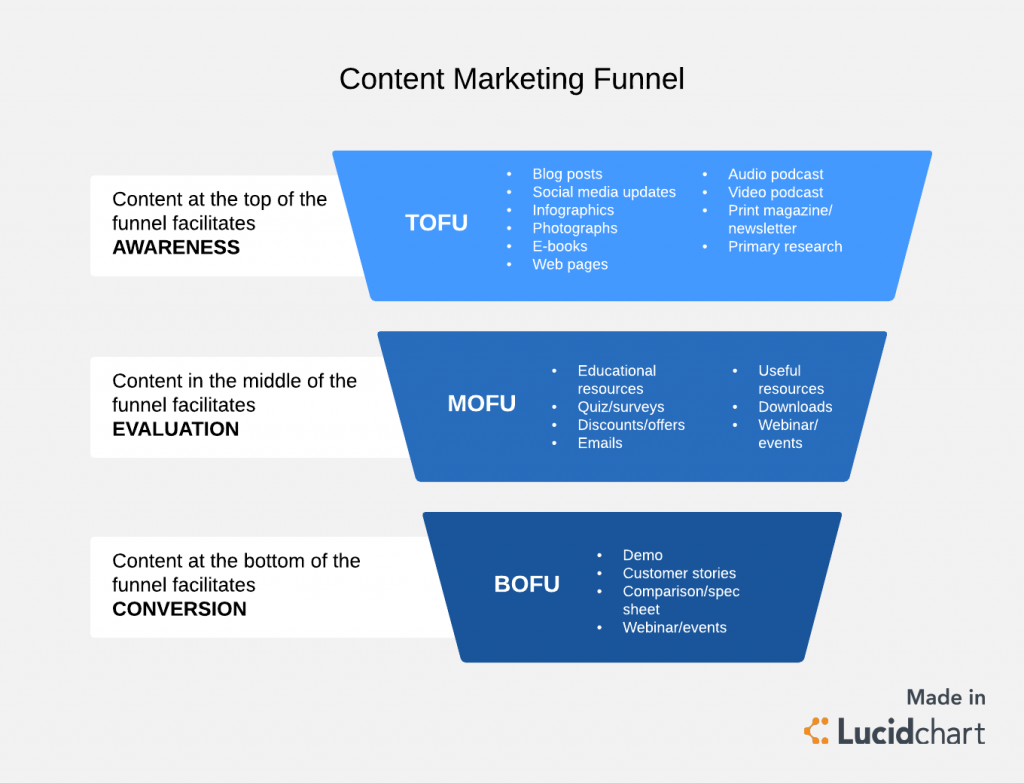
What is top of funnel content (TOFU)?
Top of the funnel content is that type of content that offers information and tries to teach the visitors, answers common questions or pain points. At this stage, you don’t try to sell to the visitor because you might risk losing them. At all costs, avoid commercial content for this audience. TOFU content is used mainly for attracting new prospects and build awareness.
What is middle of funnel content (MOFU)?
Middle of the funnel content lays between quality content that keeps the users informed and their understanding and need of your services or products. It is a key piece in your content marketing strategy. You can deliver MOFU content through case studies, personalized white paper that includes your business solutions, product reviews and best practices, discounts, webinars, events, surveys and so on.
What is bottom of funnel content (BOFU)?
Bottom of the funnel content is at the purchase level, where you have brand loyalty and users see in you their loved brand. It comes after TOFU content and MOFU content as validation for delivering valuable content that responded to your clients’ needs. It is the type of content where you nurture and convert your lead magnets into customers. With the right data, you can increase your conversion rate. BOFU content can have different forms, such as live demos, customer stories and personal reviews from clients, comparison products, new product or features launch and so on.
Your audience can be divided into all three stages of the buying funnel: top of funnel (TOFU), middle of funnel (MOFU) and bottom of funnel (BOFU). For each stage, there are specific triggers that pull the visitor down the funnel. And for that, you need to create content that will convert them.
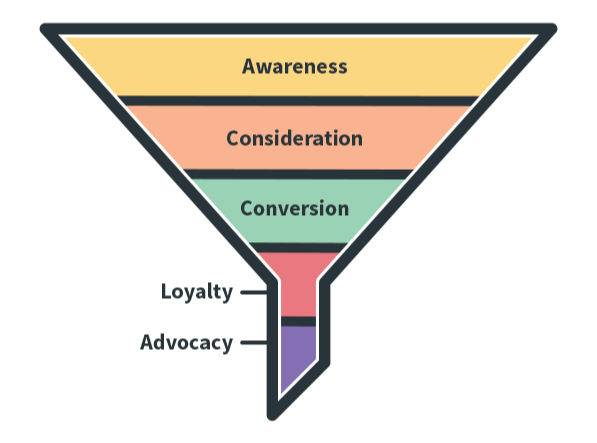
Source: www.aweber.com
The perfect content needs to deliver information based on the stage of the content marketing funnel where your audience is. For that, you need to know what type of content works best for all those three stages.
2. Write In-Depth and Relevant Pieces of Content
Now that you know what type of content you should write, it’s time to actually start writing for SEO and most importantly for your users’ needs.
Google likes long and relevant content.
Studies say longer posts are more often associated with better ranks. Buffer says that the ideal blog post has around 1600 words. In one of our researches, it turned out that the top-ranking articles have 2000 words.
Below you can see the results for the blog posts that have 1001-5000 number of words, amongst other categories.

As you can see the number of ranks decreases when the positions drop. The first 5 positions can be set apart from the rest of the pages. It seems that overall a higher number of words are correlated with higher ranks. That is suggested not only by the chart but also by the Pearson Correlation Coefficient, which indicates a very strong negative correlation (-0.9). The negative correlation means that, in general, longer posts are more often associated with better ranks.
I am not saying to write long content for the sake of writing. But when you tackle a subject, try to make the most out of it and go as in-depth as possible (and suitable for your site and business).
How would I know what to write about? one might ask. The Content Optimizer comes to rescue as it does most of the job for you, no matter the niche. Because it is designed for content writers and combines all the steps for the content writing process.:
- Keyword Research: First you can search for the perfect fitting keyword phrase for your topic. Understand the keyword intent and select your best option. Based on the language, the country and the device you want to rank for, you get a list of recommended keywords relevant for your selection.
- Ranking Analysis: Second, you can perform a short a concise competitive analysis on a particular keyword, see what type of pages rank (video, text, how-to, lists, tutorials and so on) and find similar topics. Plus you’ll get to see how long are the articles written by your competitors, the readability score and the number of focus keywords used in the content.
- Content Optimization: In the final step, you can start adding your piece of content and optimize it for that search term, by including your original idea. Depending on what type of query intent, you’ll have to write similar blog content to respond to that intent, to have useful content. The tool will give you a list of keywords that you’ll have to add them in context and it will tell you if your piece is well optimized for search engines by using a Content Score. The higher the Content Score, the higher the chances to improve your ranking in Google and respond to the users’ needs. That way you can produce content that is relevant and it has value.
You get lots of metrics that will tell you how many words your piece of content has, what keywords does it use, what keywords it should use, and it gives you new ideas about arguments you should cover in your copy.
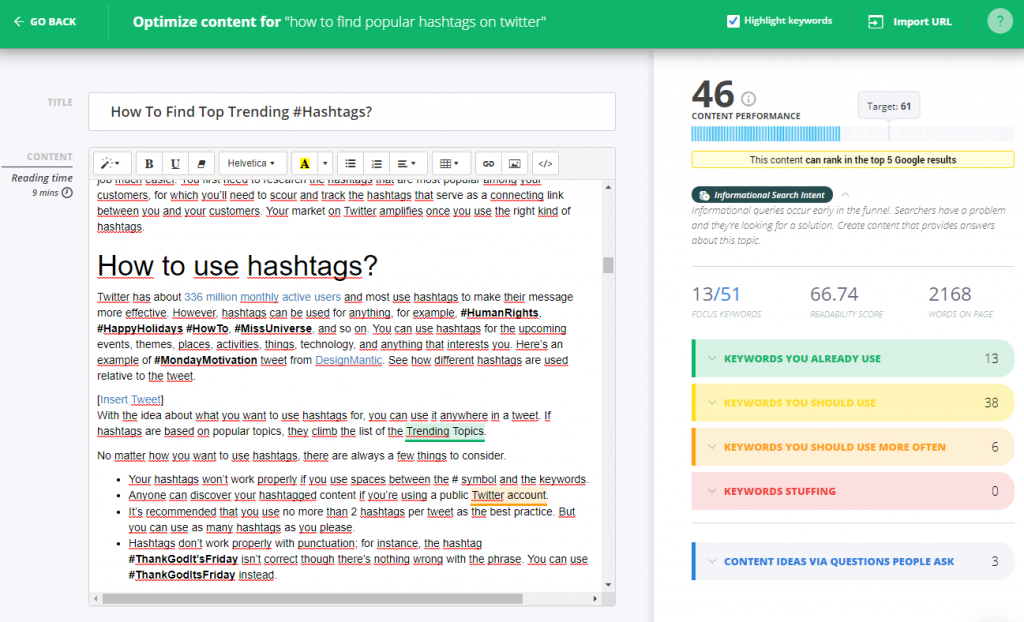
Did you know?
The Content Optimizer & Keyword Tool from cognitiveSEO is a tool created by digital marketers for content writers. The cool thing about it is the fact that has all sorts of metrics and gives insights. On the matter of content leght, it automatically correlates the number of words on a page with rankings.
You just need to type in a keyword you’re interested in for optimizing a page, and the tool extracts the search results that rank for that keyword + many useful data. You get to know how well optimized from a content point of view each page is, what links are pointing to that page, how many words are on the page, the publish date, etc. All this data is very useful as it gives you insights on how your content should look like to rank in top Google results.
3. Add the Keywords You Want to Rank for in Your Title
Besides content, the title also matters. The third step for writing the perfect content is to strategically add keywords in the title. And for that, there are lots of studies to back up.
Years of practice and research showed us that Google puts more weight on the keywords that are closer to the beginning. Adding the keyword closer to the beginning of the title will give you high advantages. Firstly, because you can increase your click-through rate, as the user would like to click on titles that contain what they are looking for online. Secondly, this way you can avoid that the title to be changed by Google and have a different title shown in SERP. Google does this now. Depending on the search made by the user and what is found relevant on your page, the search result for your webpage as you know it can be altered by Google and you can get a different title and meta description.
Google is smart to understand what your page is about, but it is important you give it some hints.
If you offer good hints, then it will figure it out easier and reward your webpage with better SEO rankings.
The second thing to mention on this topic is the effect of keywords in the title. In one of our researches, we could see if adding the keyword in the title has any ranking importance. By evaluating titles analyzed in the research, we used 3 levels of similarity (low, medium and high) to spark some light into the discovery and extract data from the first 20 search engine ranking positions.
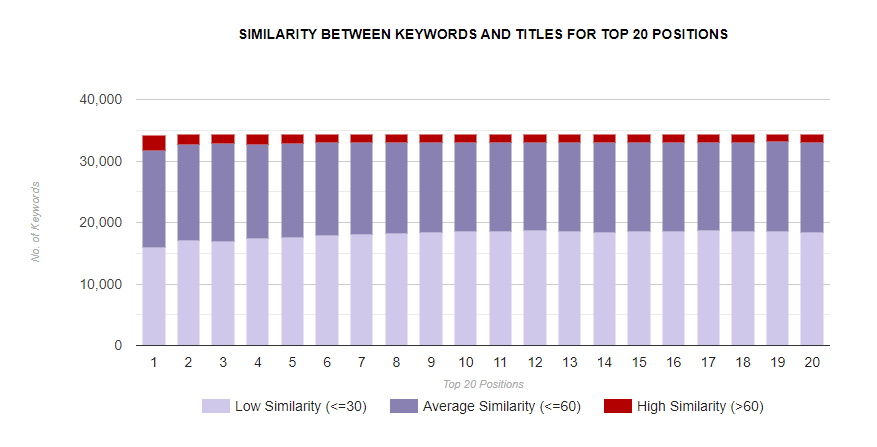
If we take a look at the chart results, we can’t really talk about a high correlation since the differences are pretty subtle. But we can surely get out some insights. For example, mainly the instances with a high similarity can be found for 1st ranking website. The red line is slightly bigger than the rest of the rankings. Moreover, there’s an overall decreasing trend form the 1st position until the 20th position. Which can mean only one thing:
Adding the keyword in the title can make a clear difference between ranking 1st or 2nd.
Another good intake is to try optimizing the title for multiple keywords, if possible. But don’t include keywords just for the sake of it.
4. Design an Internal Linking Structure
Nobody says it better than Google: Link architecture—the method of internal linking on your site—is a crucial step in site design if you want your site indexed by search engines. It plays a critical role in Googlebot’s ability to find your site’s pages and ensures that your visitors can navigate and enjoy your site.
Any good website should have a well-designed internal linking structure. If you want your website to rank higher, your content creation process should include an internal linking strategy. Search engines look at internal links when deciding what pages should rank, amongst lots of other factors.
The best internal linking strategy is to do internal linking.
An internal linking structure should connect web pages that are related and bring added value and more information when needed, not just for the sake of it. Too many internal links on a page won’t do any good for that page. Just think of those pages flooded with a huge list of links, like the one below:
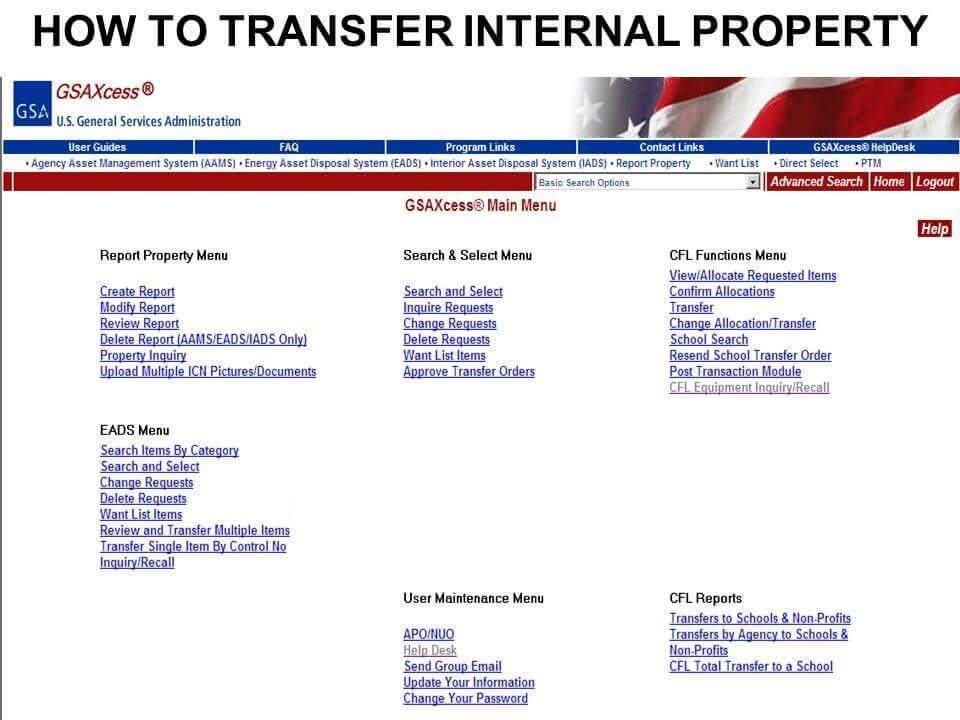
Another example of pages with lots of internal links is when it has a huge navigation or right side/left side “Most popular categories” or “Most popular articles”.

Note this: Adding more internal links on a single page will devalue the existing links. You have to rob Peter to pay Paul. One way or another, you decide to strengthen particular pages and reduce the weight of other pages.
Each page has a PageRank amount (from 0 to 100, for example) divided by the number of links. So, the fewer the number of links, the more weight they pass.
Dave Davies performed an SEO audit on a large e-commerce site called Trophy Central and implemented an optimization plan including internal linking and web design. After the implementation was defined, the results came slightly easy. He monitored 381 terms and high changes in SERP, divided into 4 categories:
- Top 100: More 56 keywords ranking in top 100 terms, across 24 declined in rankings and across 165 improved.
- Top 20. More 34 phrases ranking in top 20 terms, 5 declined in rankings and 55 improved.
- Top 10. New more 9 in top 10 terms, declined for 3 and improved for 13 phrases.
- Top 3. The site had no top 3 terms in the beginning and had 2 after the changes.
If you decide to design an internal linking strategy and receive more website traffic, besides improving your site’s rankings, make your links highly visible and not hidden in obscure locations.
Did you know?
The Site Audit Tool from cognitiveSEO automatically shows you information about the internal linking structure of any site.
You get a list with all your internal links categorized, as you can see in the print screen below. There are three categories of pages you should take a close look at:
- Pages with a small number of internal links – try to link them from a higher number of pages in your site.
- Orphan pages – those are pages that are not linked at all from your site.
- Pages with over 100 links – they might be linked too much.
You can use Site Audit tool to check other linking issues (internal and external, broken link building), duplicate content, indexability, performance metrics, mobile data, mixed content, social media issues and many more.
5. Create Google Friendly URLs
The fifth step is to create Google-friendly URLs following our next guidelines.
Some time ago, we performed an in-depth study on 34k Keywords to study the influence of titles and URLs in SERP. When we analyzed the URLs length to see which is the best format correlated with higher rankings, we saw that the more concise the URLs, the greater the chance to have higher rankings. Below you can see the chart with the extracted data:

As long as the title length is between 50-60 characters and the URL length is between 90-105, you’re safe. Having a concise URL length carries more benefits than having a long and not so easy to read or remember URL. If the URL and title contain the focus keyword, that is surely an advantage. But we’ll discuss this further on.
Of course, having a concise URL is helpful in all sorts of ways beyond the search results hierarchy. For instance, even if most casual users don’t bother remembering full URLs nowadays, it can still count as an advantage if you make it easy on the brain. Think about EMDs, for instance: instinctively, you are more likely to go with the URL that most resembles your thought process (“I need to find an electrical bicycle…. oh, looks: a site named just that”). The extra effort you can put into it is making sure that not only the homepage, but pretty much any page on your website has its URL fit in a neat number of characters (that, if too large to be easily remembered, can at least be short enough to be easily recognized).
6. Keep Updating Your Blog with Fresh Content
Amongst all the ranking factors mentioned above, freshness is highly important for Google as it has improved its ranking algorithm to offer up-to-date relevant results. At the time the algorithm was updated, Google promised that its focus was to provide the user with “fresher, more recent search results“. Which makes freshness a factor that can define your perfect content strategy.
Freshness isn’t the same thing as frequency. The “freshness” in the fresh content lays in the information. Writing fresh content can be visible through its value at the moment we speak and the meaning of the data behind it. Fresh content is dynamic in meaning.
Google likes fresh content but only in certain cases. Changing the date isn’t updating a piece of content, but rather faking it. There are some industries where freshness has a higher importance on rankings:
- Recent events or hot topics such as news.
- Recurring events such as conferences.
- Frequent updates such as product reviews.
Here’s what John Mueller says:
As a user, recognizing that old content is just being relabeled as new completely kills any authority that I thought the author / site had. Good content is not lazy content. SEO hacks don’t make a site great. Give your content and users the respect they deserve. https://t.co/aEWhH0KnGw
—
John
(@JohnMu) August 15, 2018
Publishing fresh content will help you get more links and achieve higher SEO visibility. Moreover, freshness factors in your content can impact your CTR.
Conclusion
All these success factors can help you create evergreen content and deliver perfect content for SEO purposes, but mostly for your users’ well-being. You’re probably writing lots of content on a daily basis, but to make it worth your time, you need to be strategic about it. Writing successful content will help you increase your conversion optimization. For that, your content strategy needs to contain several things: length, keyword appearance, optimized URL & title, reason & intent, link power. So your blog articles should be around 2000 words, have keywords in title and URL, preferably in the beginning.
You need to understand users’ intent and offer similar content, deliver dynamic and interactive content that has accurate information, valid data. In addition, create connections between webpages through a powerful internal link architecture.
If you understand how SEO and content fits into your overall digital marketing strategy, then you’ll manage to increase traffic, and in the end, increase your rankings.
Takeaways – The type of content Google wants to rank:
- Is intent-based.
- Contains concise URLs, titles with keywords closer to the beginning.
- Has a well-structured internal linking architecture.
- Has well-targeted content for target audiences from each stage of the funnel.
- Is quite long (~2000 words).
- Offers fresh information.
The post SEO Content Writing Done Right – Create Content that Google Wants to Rank at the Top appeared first on SEO Blog | cognitiveSEO Blog on SEO Tactics & Strategies.
SEO Content Writing Done Right – Create Content that Google Wants to Rank at the Top posted first on http://nickpontemarketing.tumblr.com/
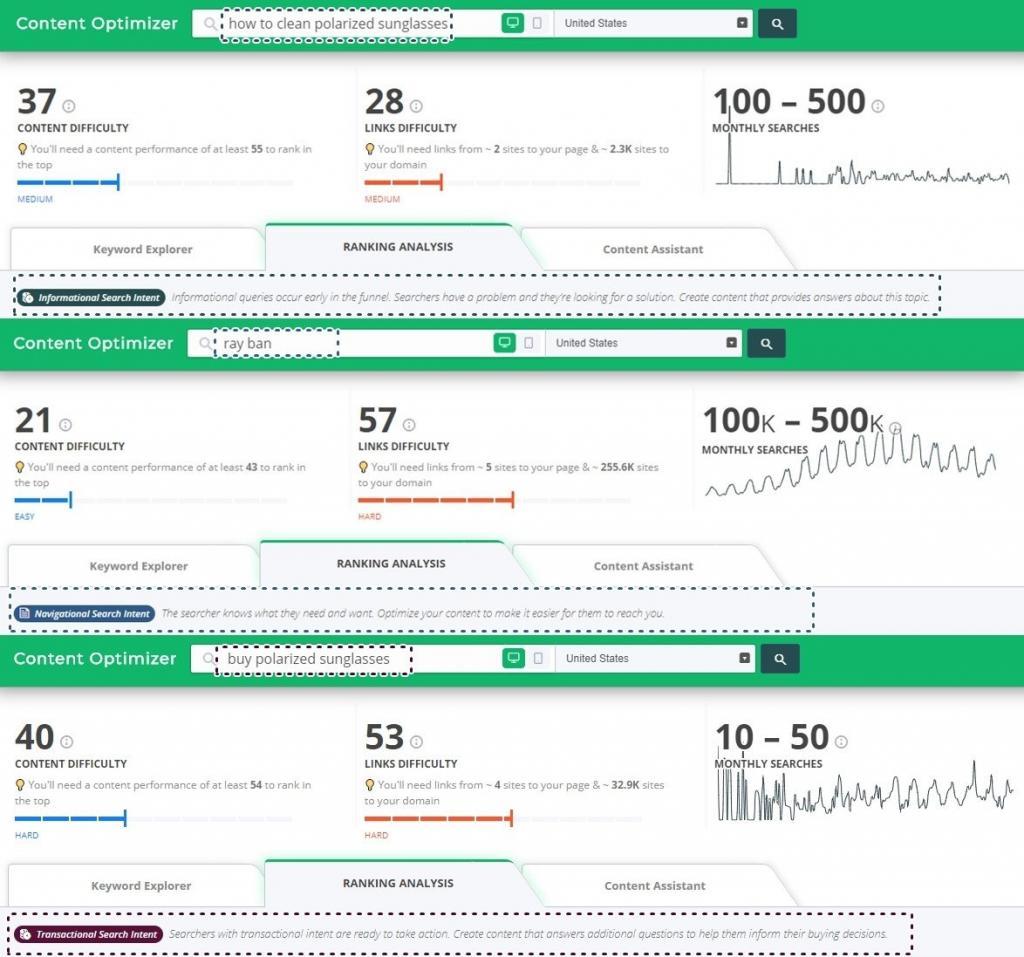
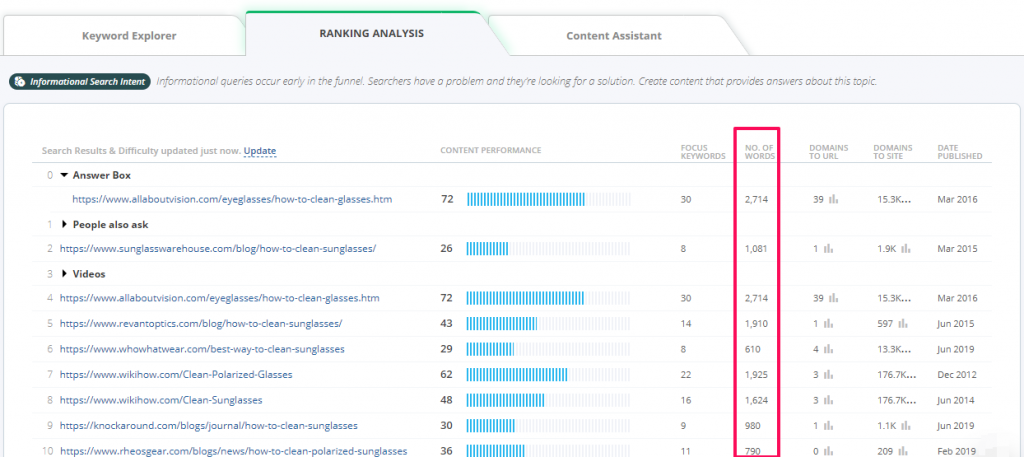

No comments:
Post a Comment